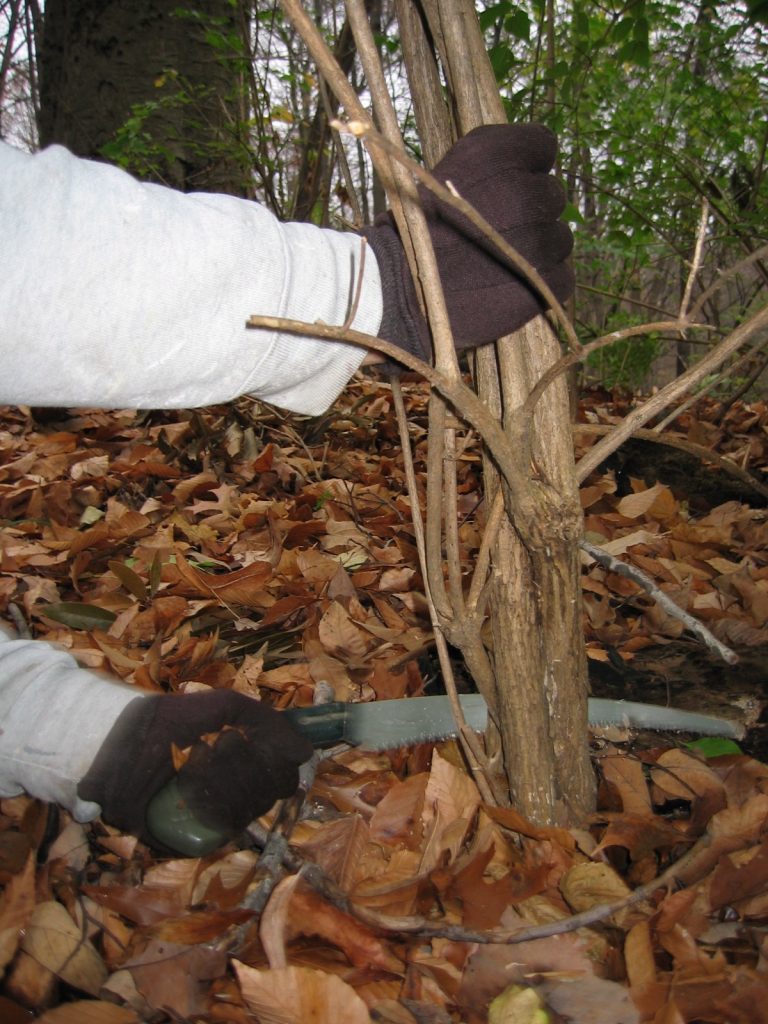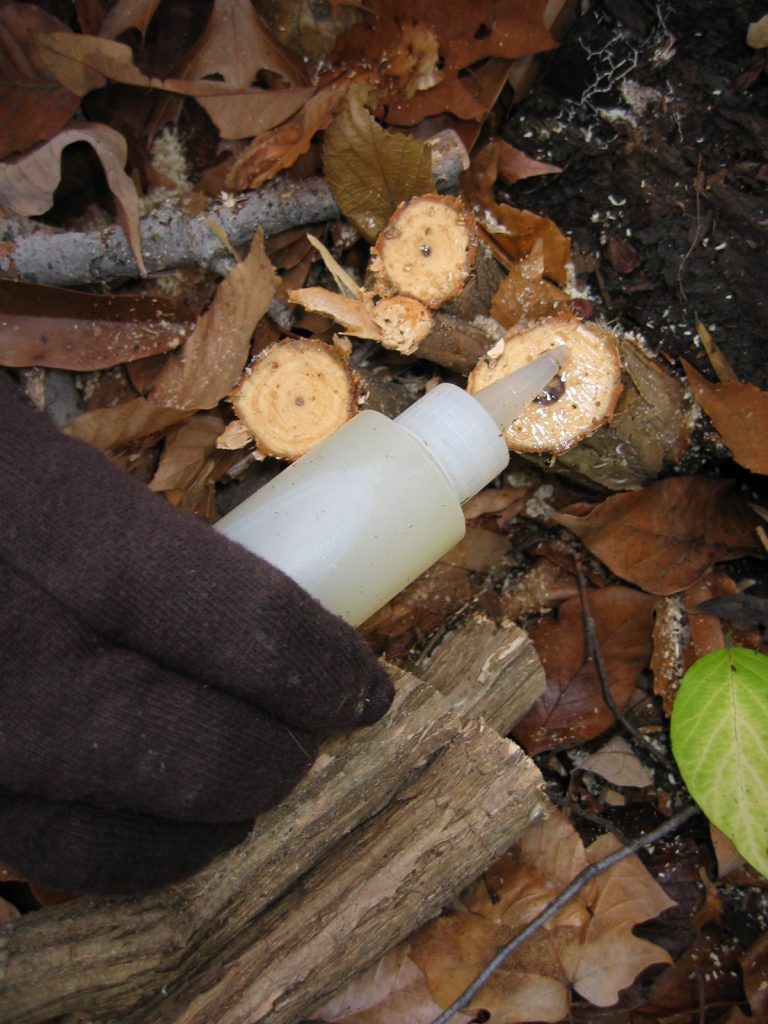How to Eradicate Invasive Honeysuckle
Of the many ways, we recommend this method.
Basal cut as low as possible. Tip: The pruning saw is very efficient and safe; I use a Corona pruner. Loppers work great for smaller ones. Of course, the chainsaw for the monsters. Never cut the stump at an angle. The herbicide runs off and the sharp end can hurt if one happens to stumble nearby.
Treat with 20% glyphosate within seconds after cutting.
Tip: Getting the proper strength of herbicide is very important. Most garden centers have a huge variety of “weed killers”. You must read the concentrations carefully. If you can find a 20% solution over the counter, great. Typically, I purchase a 40% glyphosate Roundup and mix it down to 20% using an equal amount of water to herbicide. Using a funnel over a mat or cardboard I carefully pour the 40% glyphosate into a plastic bottle filling it half way. Then an equal part water. Have rags and a plastic bag nearby. Of course always wash hands after handling. I prefer a plastic bottle with a pointed tip to apply, no overspray, no collateral damage to the environment, saves money by using a lot less material. Spray bottles are messy and don’t last. The overspray is wasteful and does not help the environment.

 Chow into 3 or 4 foot lengths to aid decomposition. This leaves the material in the forest. The results of your efforts will look better and won’t be noticeable a year later. If we leave the complete dead shrub to lay sometimes unwanted vines will populate it. Also, we need to be able to get to the Garlic Mustard in the spring, (that’s another story).
Chow into 3 or 4 foot lengths to aid decomposition. This leaves the material in the forest. The results of your efforts will look better and won’t be noticeable a year later. If we leave the complete dead shrub to lay sometimes unwanted vines will populate it. Also, we need to be able to get to the Garlic Mustard in the spring, (that’s another story).
Chowing is a good way to employ volunteers uncomfortable with sawing or herbicide. Chowing is good exercise for kids.

The Weed Wrench is also effective. Notice the spreading root structure of Honeysuckle. This method disturbs the surrounding soil, potentially stimulating weed seeds. Side roots may break and regrow, however it gets us away from using expensive herbicide.



